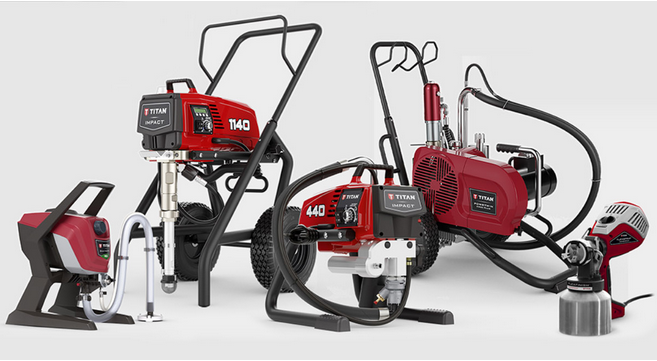Environmental Cleaning and Disinfection Principles for COVID-19
A proper cleaning of the surfaces and objects is a basic step before disinfection. According to the research, organic substances can deactivate many disinfectants. So it is important to apply cleaning procedures to reduce soil, grim, dirt and body fluids. This will allow the disinfectants to work.
Cleaning methods that are followed by disinfection can remove harmful germs such as the virus that causes coronavirus infection. The total time span that coronavirus survives on inanimate areas will vary depending on the factors including the amount of contaminated body fluid such as saliva, respiratory droplets, and blood. However, coronavirus cannot survive for long once droplets produced by coughing or sneezing get dry.
Routine cleaning of surfaces and objects is a good practice. Minimally touched surfaces such as floors, walls, ceilings, and blinds can be thoroughly cleaned and disinfected with impact 1140 disinfectant sprayer. This multi-gun sprayer machine has proven for spraying disinfectant materials with high production. It delivers a constant wetted surface without over-saturation. Disinfectant sprayers are best for disinfecting office buildings, schools, workout facilities, restaurants, hospitals, public transportation, and municipalities.
Routine environmental cleaning of frequently and minimally touched surfaces
Frequently Touched Surfaces:
It is recommended to frequently clean the objects that are touched often such as door knobs, countertops, shelves, light switches, bedrails, tabletops, and chairs etc. In order to clean these objects, use detergent solution as per manufacturer’s guidelines. The type of detergent can be opt by determining the nature of surface and degree of contamination. Detergent-impregnated wipes can be utilized on frequently touched surfaces but should not utilized as a replacement for the mechanical cleaning process.
Minimally Touched Surfaces:
In this global pandemic, wipes are not adequate for cleaning general surfaces and non-patient care areas. After damp mopping, utilization of disinfectant sprayer machines is preferable to kill viruses. Walls and windows should be thoroughly cleaned when dusty or soiled. Window curtains must be changed regularly. Sinks, basins and dishes should also be cleaned on daily bases.
Hand hygiene:
Soap and water should be used frequently in order to maintain hand hygiene. Use alcohol based sanitizer when hands are contaminated from contact with environmental surfaces. Cleaned hands minimizes the risk of environmental contamination.
Important Tips for Cleaning Staff:
There are many risks associated with cleaning the soiled surfaces. While sanitizing and disinfecting, cleaning staff should avoid touching their face, mouth, nose and eyes. It is highly recommended to wear protective and disposable gloves, surgical masks, eye protection and a face shield when cleaning. In addition, alcohol based sanitizers must be used before wearing and after removing gloves. Cleaners should also use these sanitizers before and after removing the surgical mask and eye protection. The surgical masks and eye protection act as barriers to cleaners who unintentionally touch their faces with contaminated hands and fingers, even gloved or not.
Use the disinfectant which is claimed by the manufacturer as an antiviral activity, meaning it can kill viruses. Commonly used disinfectants include ethanol, isopropanol, quaternary ammonium compounds, sodium hypochlorite etc. If you are dealing with visible contamination with body fluids and respiratory secretions, wear a full length disposable gown with eye protection, surgical mask, and gloves. Advice can be taken on appropriate procedures for wearing PPE kit from your health and safety consultants, if needed.
Use of disinfection:
- Use freshly prepared bleach solution. For appropriate dilution and usage, take advice from health and safety consultants.
- Thoroughly read the operating manual of disinfectant sprayer gun before using. Review and follow the recommendations contained in the manufacturer’s material and product safety data sheets.
- Use disposable paper towels or a disposable cloth when wiping the surfaces with bleaching solution.
- Gloves and mask should be discarded in a leak proof plastic bag.
- Wash hands properly with soap and water and dry with disposable paper or single-use cloth towel. You can also use alcohol-based hand rub if water is not available.
Preparation Of Disinfectant Solution:
- Don’t forget to wear protective gloves while handling and preparing bleach solutions.
- In case of splashing, wear protective eye-wear
- Bleach solution should be used mainly on hard, non-porous surfaces as it can damage textiles and metals.
- After spraying, leave the surface to dry for at least 10 minutes because sufficient time is required to kill the virus.
How Can We Help Prevent The Spread Of COVID-19?
Practicing good hand hygiene is the best defense against most germs. Frequently wash your hands with soap and water for 20 seconds before and after eating, and after going to the toilet. Cover your cough and sneeze with hands or disposable tissues. Don’t forget to wash hands after sneezing or coughing. Always put sanitizer in your pocket/bag. If you are feeling unwell, avoid contact with others and do self-quarantine. It is also important to remember that most people showing symptoms such as fever, cough, sore throat or tiredness may suffering with cold or other respiratory illness, not coronavirus.


